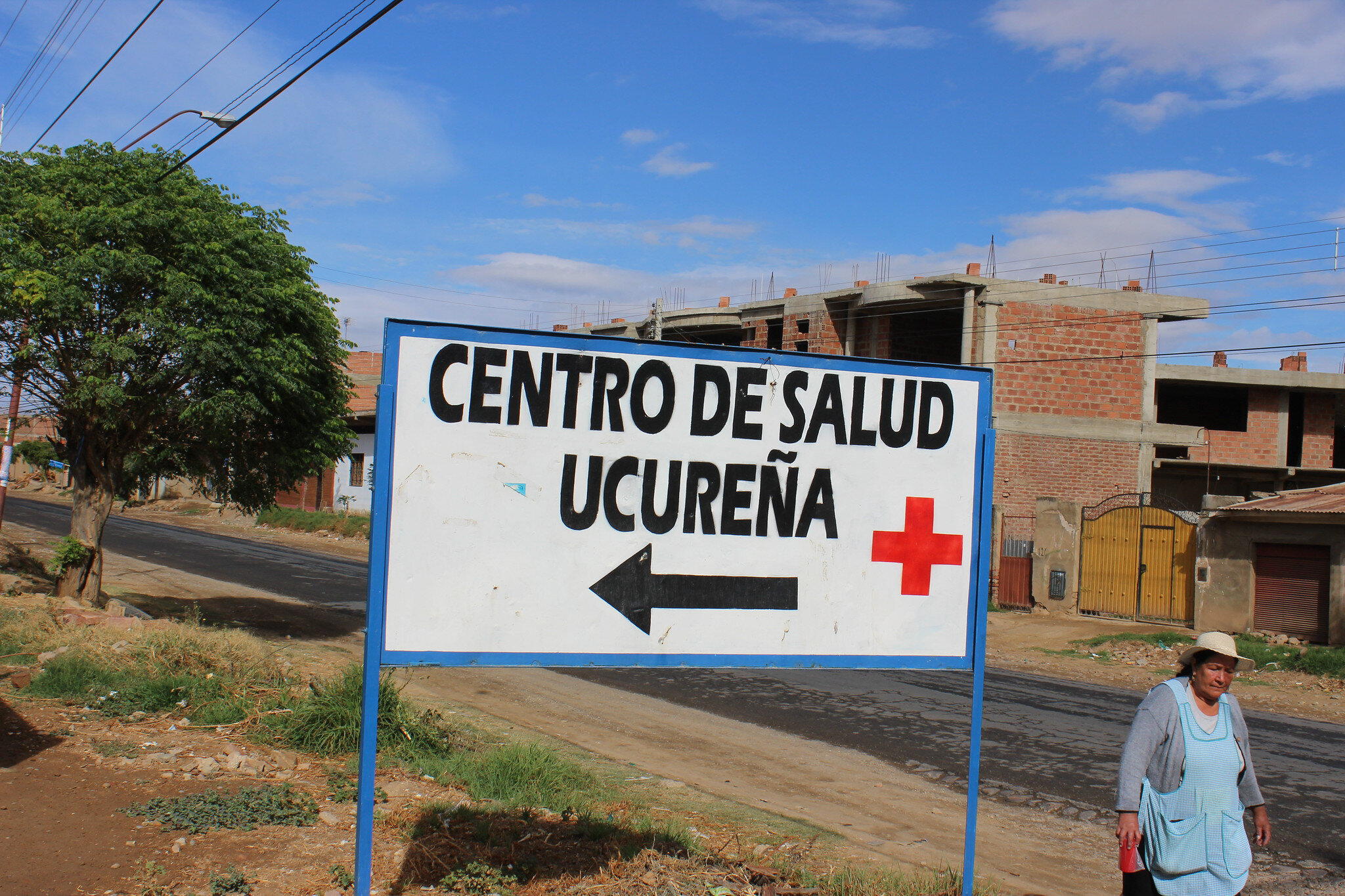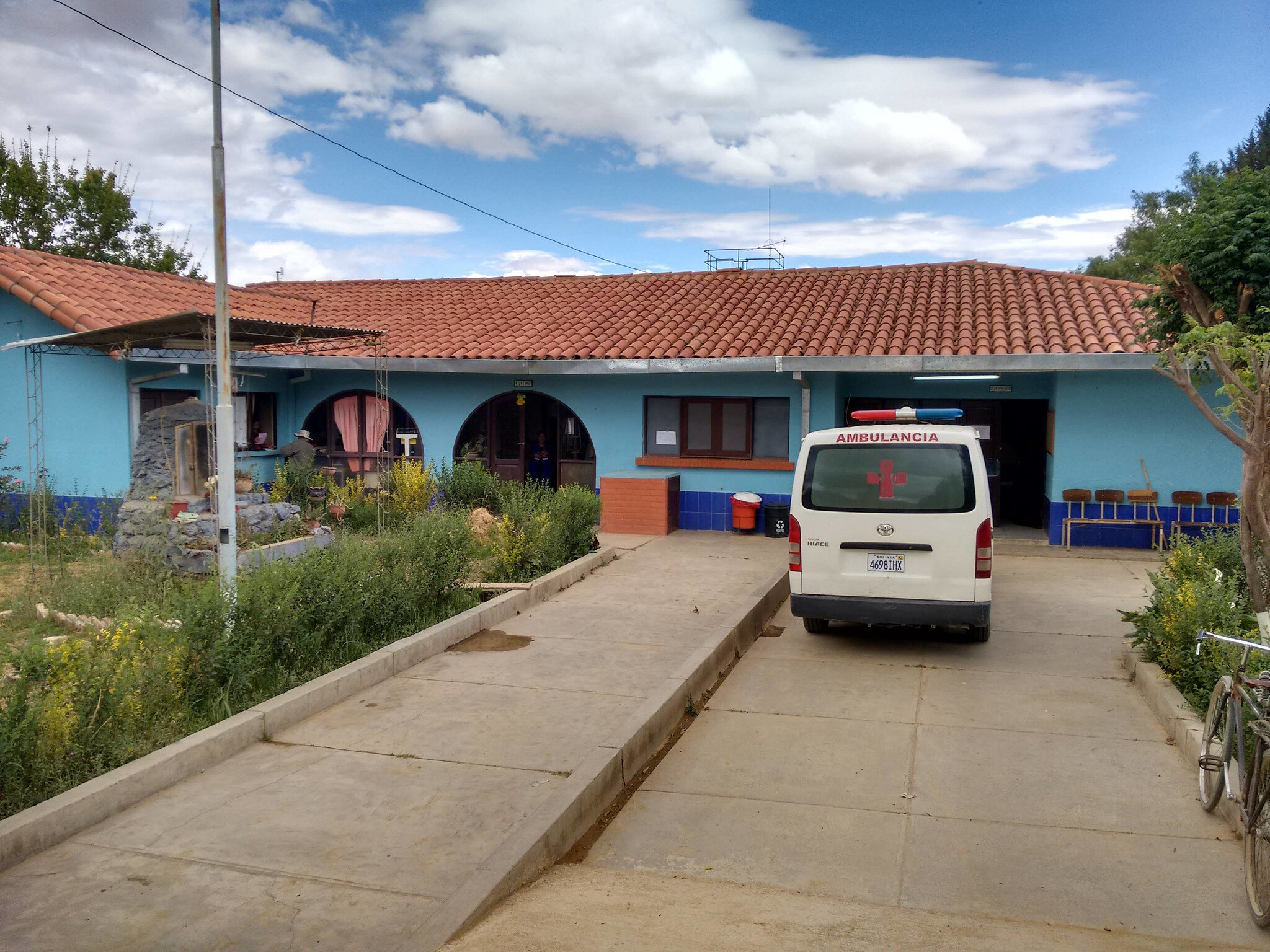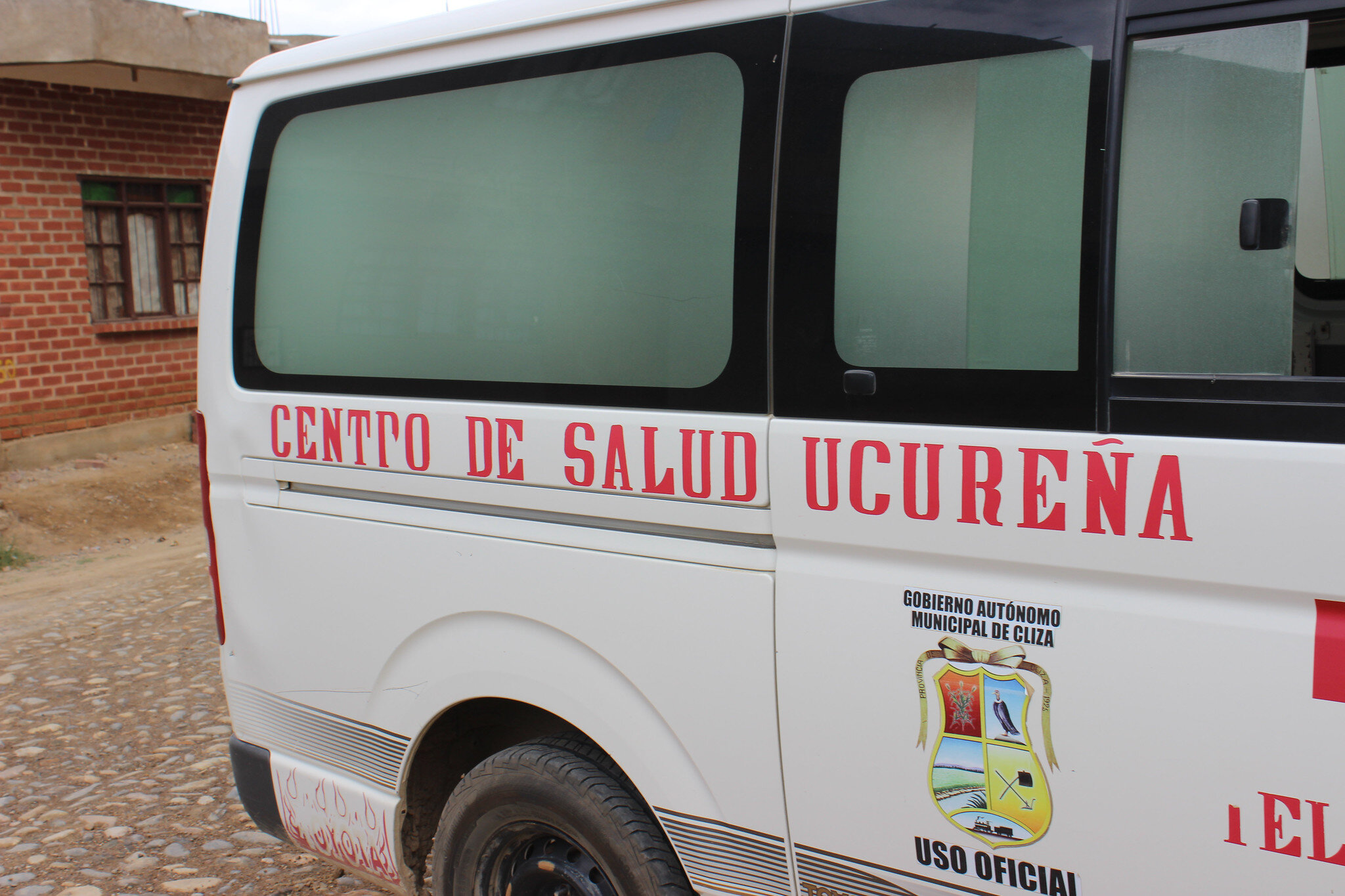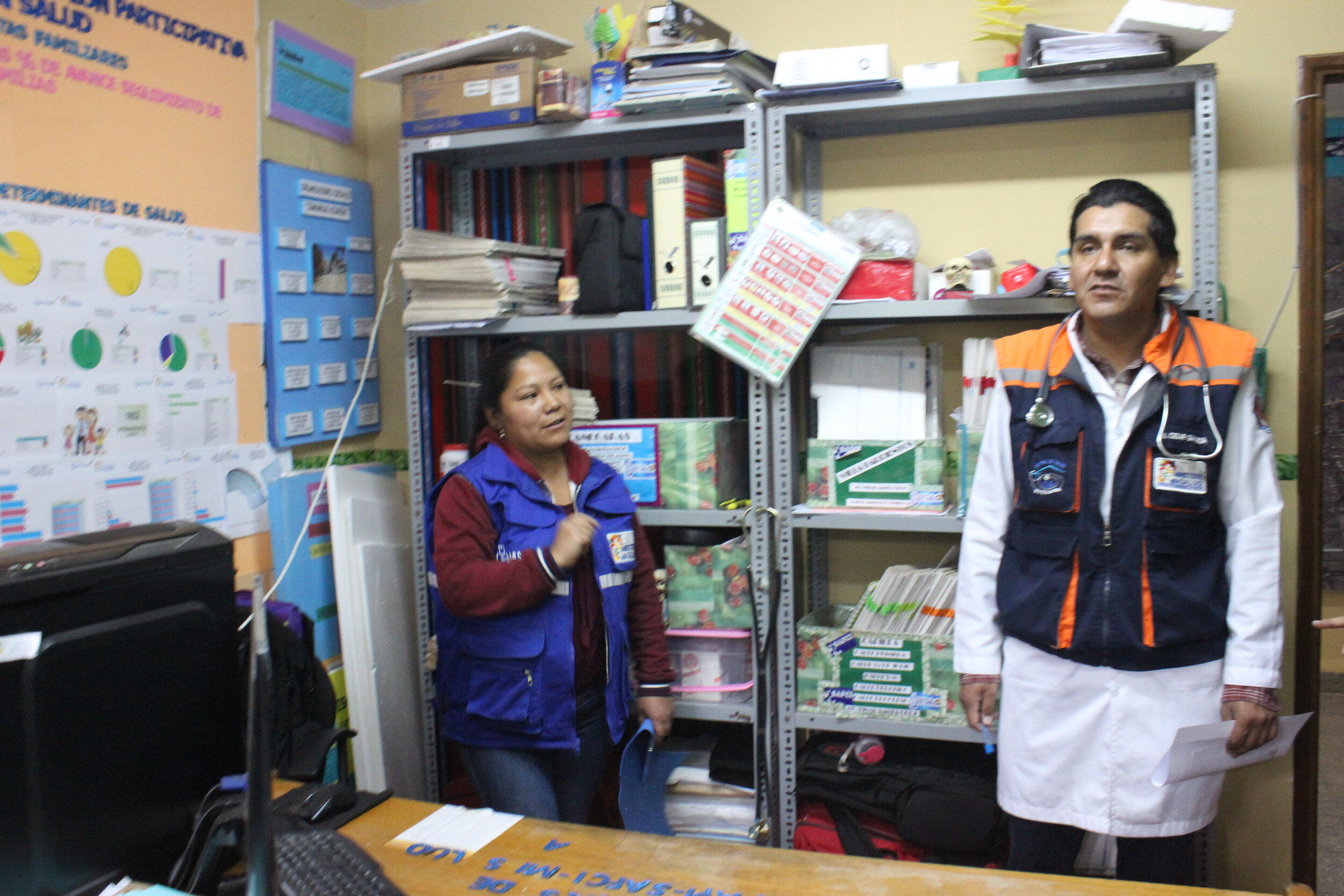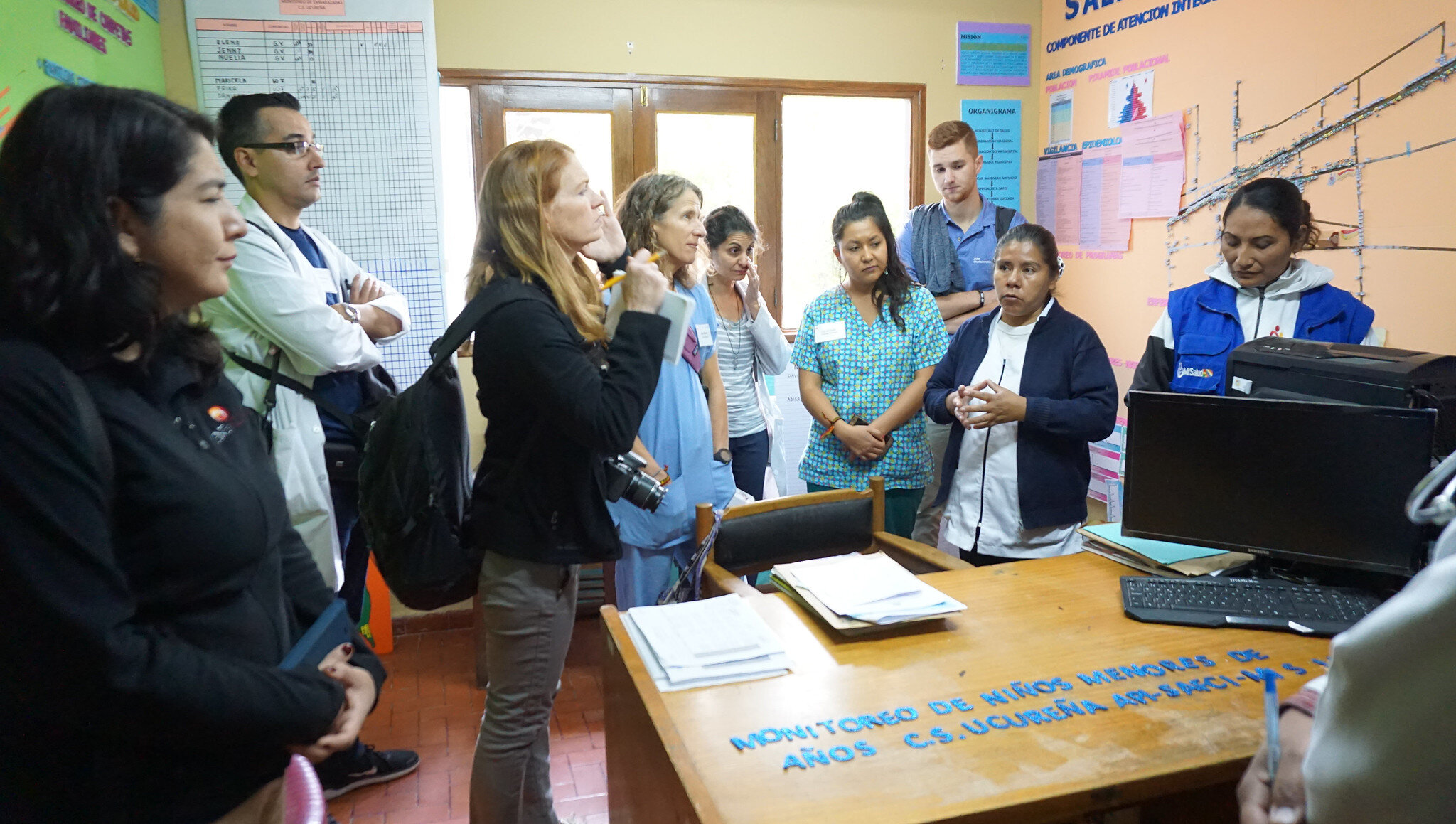Mapping a More Just System
This week marks the dates of our planned multi-specialty mission trip to Cliza. While travel is not possible at this time, we continue to support the work of our partners at the San Juan de Dios Women and Children’s Hospital with needed supplies. We will also host six online trainings for hospital staff throughout the week. These virtual encounters are more than simple training. They also encourage fraternity and solidarity between our US health providers and their Cliza counterparts. We have much to learn from each other. In the blog below, we reflect on one of many things our mission team learned during our 100th mission trip last year.
Some of our 2019 missioners with their hosts at the Centro de Salud in Ucureña.
Written by Cathy Flanagan, missioner and volunteer
Last October, members of the 2019 Multi-Specialty Mission team were honored to learn from Dr. Cesar Gambow about the challenges of, and innovations in, rural health care. We met Dr. Gambow and the talented and dedicated team he leads at the Centro de Salud in Ucureña, an outpost clinic providing primary care to ten rural communities. The villages the clinic serves are home to the descendants of people who were freed by the 1953 Agrarian Reform Law, which abolished forced labor. These are people, many of whom are indigenous to the area, striving to earn a subsistence living from the land. Sadly, many experience extreme poverty.
We learned from Dr. Gambow that building relationships throughout the community is key to their work in providing a safety net for those who might otherwise fall through the cracks. Each day, doctors, nurses, and social workers go out from the clinic into the community to meet residents in their homes and schools. Dr. Gambow says that without this individualized outreach, they could never hope to close the healthcare equity gap. Although establishing trust takes time, the clinic workers are committed to making the investment. They see themselves as the frontline in a fight against injustice.
One of the unlikely weapons in this fight is a giant 3D map. Dr. Gambow showed us a room in the clinic whose walls are covered with maps and charts. The maps include every house in the area for which the clinic is responsible. They show which homes have electricity and water, and which don’t. They are used to track food scarcity, and whether a family has access to safe plumbing. The houses on the maps are color coded, indicating the health risk each home faces. Green means low risk. Red is high. A house marked with a cane has a person with a disability, other symbols designate Chagas disease and pregnancy. It has taken five years to develop this system and gather the information necessary to assess risk and provide services to these communities. Some houses have no color or symbols at all. Despite numerous visits, the clinic professionals have been unable to gather information on these families.
A top priority for Dr. Gambow is collecting information on mothers and children. But a big obstacle to this effort is a strong cultural hesitancy to discuss gynecology and women’s reproductive health. A prime example was the difficulty the staff faced in convincing women to get pap smears, which can detect cervical cancer at an early stage and allow for treatment before the cancer spreads. Social workers spent years educating people on HPV and cervical cancer, without much success. Ultimately, they learned that one unique relationship could overcome the obstacles they faced; that between mother and daughter. Social workers began to give talks on cervical cancer to young women in their high schools. The daughters then became the ones who convinced their moms to go to the clinic for preventative care.Experiences like this have proven that relationships of trust are necessary in order to serve the community.
The clinic’s connections to the local school system, especially to teachers, has also proven invaluable in reaching rural patients. The Ministry of Health has been working in partnership with teachers and administrators to use schools as health clinic outposts, where clinic staff can administer vaccines and perform check-ups. Our mission team was able to experience this unique arrangement firsthand, working alongside a clinic doctor and nurse during a visit to a small elementary school in Tacko-lomo. At the school, children were weighed and measured and asked questions, including about their diet, as food scarcity is widespread. Local teachers are committed to improving the health of their students. In fact, they are often the ones to dispense the medications prescribed for the children. During our visit, one first grade student who received a check-up had a last name that was unfamiliar to the team from the clinic. This meant that the child came from one of the homes that was left uncolored on the map. Without school visits, children like this might never see a doctor except in a time of medical emergency. As the nurse entered the child’s information on a new chart, the clinic doctor expressed satisfaction that another patient had come under their care.
After five years of building trust and relationships through school visits and door to door outreach, clinic visits have increased. But the need for outreach is continual and the clinic staff is dedicated to reaching ever more people and improving the health of everyone in the community.
Our visit to the Centro de Salud in Ucureña enabled us to learn about rural health care from innovative experts in the field. We saw firsthand that working with local communities and building relationships of trust is essential to providing health care in rural areas. The unique, interactive system created by the clinic to process data and monitor health risks, and thereby develop effective local solutions, can serve as a model for rural healthcare anywhere in the world. We are grateful to the team at Centro de Salud in Ucureña for their insights and leadership as they map a path towards a healthier and more just future.


